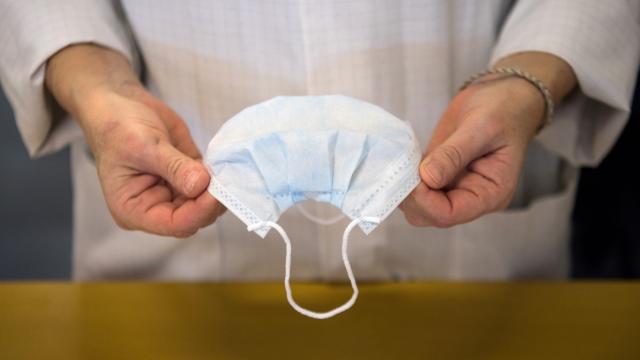The U.S. Centres for Disease Control and Prevention finally took a stance on whether covid-19 can be airborne, only to take it back within days. Over the weekend, the public health agency issued new guidelines that warned people about catching the viral illness from the lingering respiratory droplets and tiny aerosol particles emitted by an infected person. But by Monday afternoon, the CDC removed the new language, claiming it was a draft version that was posted in error.
The new language was released Friday on the CDC’s website, though it wasn’t until later in the weekend that media outlets and other public health experts caught wind of it (presumably in part because another dramatic change in language from the CDC concerning covid-19 also debuted Friday).
The new guidance still emphasised that close person-to-person contact is a primary form of covid-19 transmission — “close” defined as within 1.83 m. It also continued to warn about the risk of catching the virus by touching contaminated surfaces then your mouth, nose, or eyes but noted that this is not considered the main way it spreads.
The major change was the acknowledgment of the transmission risk posed by both the respiratory droplets and smaller aerosol particles that a person exhales while talking, coughing, or simply breathing. Up until Friday, the CDC’s guidelines only mentioned droplets, which are relatively large particles that tend to travel a few feet in the air before evaporating or falling to the ground. Moreover, the language cited “growing evidence that droplets and airborne particles can remain suspended in the air and be breathed in by others, and travel distances beyond 1.83 m,” especially in indoor areas with poor ventilation.
Upon their discovery, the updated guidelines were praised by many outside experts as one of the clearest acknowledgements by a public health organisation that covid-19 can be an airborne disease spread through longer-range droplets and aerosols. Indeed, the guidelines went on to quantify the risk of airborne transmission from covid-19 as falling somewhere between measles — a classic example of a highly contagious airborne virus — and the flu, which is not considered very airborne. That’s a framing that other scientists had used when talking about the potential for covid-19 to be airborne in certain situations, such as poorly ventilated rooms.
However, all of this praise was seemingly premature. The CDC’s page on covid-19 spread now contains a disclaimer up top, explaining that a “draft version of proposed changes to these recommendations was posted in error to the agency’s official website.”
It’s unclear whether the guidance was revoked due to pressure from higher-up officials in the Trump administration; the NYT has reported that the U.S. Department of Health and Human Services has been interfering with the CDC’s public communications. The same day that these new guidelines on airborne risk came out, the CDC also walked back its previous recommendation that not everyone exposed to the virus needs to get tested — a recommendation that was reportedly made over the heads of actual CDC scientists.
[referenced id=”1229765″ url=”https://gizmodo.com.au/2020/07/airborne-asymptomatic-and-other-misunderstood-coronavirus-terms/” thumb=”https://gizmodo.com.au/wp-content/uploads/2020/07/10/rd38oi7qrwwzlmwizosm-300×168.jpg” title=”‘Airborne,’ ‘Asymptomatic,’ and Other Misunderstood Coronavirus Terms” excerpt=”Today, the World Health Organisation formally announced a change in its stance over very two important issues concerning covid-19. The organisation stated that people can spread the virus while asymptomatic and that airborne transmission of the virus is possible under certain circumstances, such as crowded rooms with little ventilation.”]
The CDC has not yet responded to a request for comment on the removal of the airborne risk guidance.
There is still a scientific debate about the degree to which airborne transmission is responsible for the spread of covid-19, though plenty of evidence suggests the virus can and has spread via aerosols in certain conditions, such as in air-conditioned and poorly ventilated spaces where people are talking or singing. Experts agree that measures to contain the highly contagious disease should include steps to limit airborne spread when possible. Indeed, the CDC, in its now-deleted guidelines, called for better ventilation as a control measure against covid-19. In its advice to the public, the agency also advocated for using air purifiers in indoor spaces to further lower transmission risk.
Regardless of how the CDC will or won’t address airborne transmission, most of the things people can do to reduce the spread of the virus still apply. People should still maintain physical distance from others when possible, wear masks, wash or sanitize hands often, and regularly clean frequently touched surfaces.
